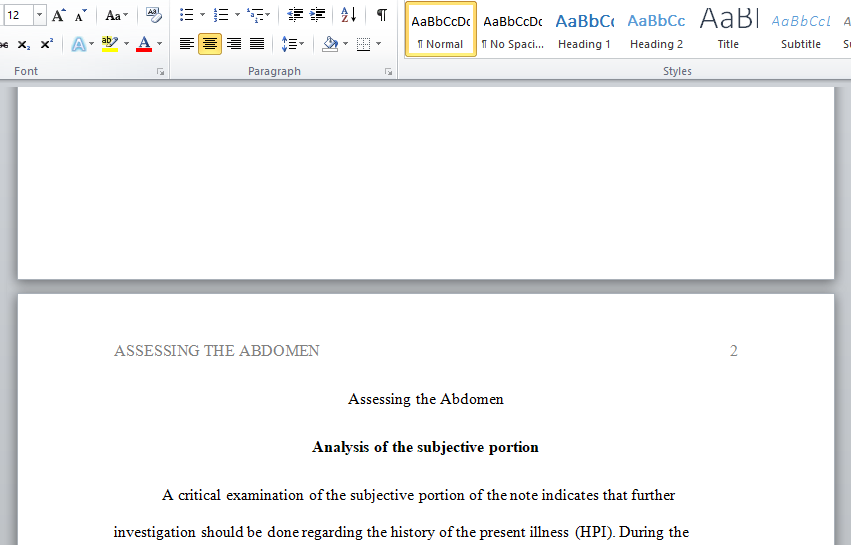Explain how to conduct an assessment of the abdomen.
- Chapter 6, “Vital Signs and Pain Assessment”
This chapter describes the experience of pain and its causes. The authors also describe the process of pain assessment.
- Chapter 18, “Abdomen”
In this chapter, the authors summarize the anatomy and physiology of the abdomen. The authors also explain how to conduct an assessment of the abdomen.
Dains, J. E., Baumann, L. C., & Scheibel, P. (2019). Advanced health assessment and clinical diagnosis in primary care (6th ed.). St. Louis, MO: Elsevier Mosby.
Credit Line: Advanced Health Assessment and Clinical Diagnosis in Primary Care, 6th Edition by Dains, J.E., Baumann, L. C., & Scheibel, P. Copyright 2019 by Mosby. Reprinted by permission of Mosby via the Copyright Clearance Center.
Chapter 3, “Abdominal Pain”
This chapter outlines how to collect a focused history on abdominal pain. This is followed by what to look for in a physical examination in order to make an accurate diagnosis.
Chapter 10, “Constipation”
The focus of this chapter is on identifying the causes of con
The Assignment
- Analyze the subjective portion of the note. List additional information that should be included in the documentation.
- Analyze the objective portion of the note. List additional information that should be included in the documentation.
- Is the assessment supported by the subjective and objective information? Why or why not?
- What diagnostic tests would be appropriate for this case, and how would the results be used to make a diagnosis?
- Would you reject/accept the current diagnosis? Why or why not? Identify three possible conditions that may be considered as a differential diagnosis for this patient. Explain your reasoning using at least three different references from current evidence-based literature.
Subjective:•CC: “My stomach hurts, I have diarrhea and nothing seems to help.”•HPI: JR, 47 yo WM, complains of having generalized abdominal pain that started 3 days ago. He has not taken any medications because he did not know what to take. He states the pain is a 5/10 today but has been as much as 9/10 when it first started. He has been able to eat, with some nausea afterwards.•PMH: HTN, Diabetes, hx of GI bleed 4 years ago •Medications: Lisinopril 10mg, Amlodipine 5 mg, Metformin 1000mg, Lantus 10 units qhs•Allergies: NKDA•FH: No hx of colon cancer, Father hx DMT2, HTN, Mother hx HTN, Hyperlipidemia, GERD •Social: Denies tobacco use; occasional etoh, married, 3 children (1 girl, 2 boys)
Objective:•VS: Temp 99.8; BP 160/86; RR 16; P 92; HT 5’10”; WT 248lbs•Heart: RRR, no murmurs•Lungs: CTA, chest wall symmetrical•Skin: Intact without lesions, no urticaria •Abd: soft, hyperactive bowel sounds, pos pain in the LLQ•Diagnostics: None
Assessment:•Left lower quadrant pain •Gastroenteritis

